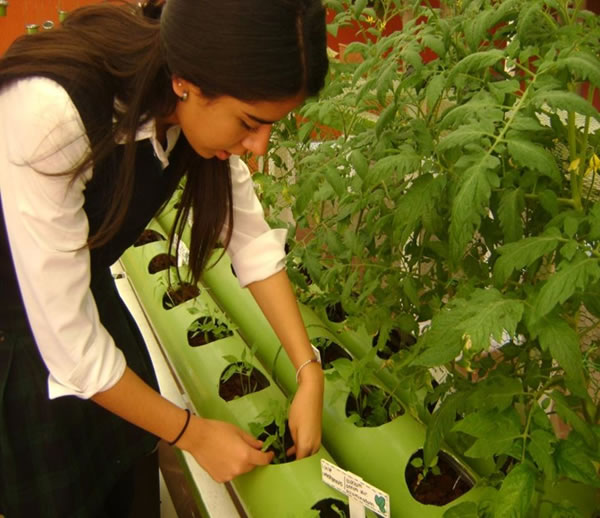
Education through ART, TECHNOLOGY and SCIENCE, giving our pupils the necessary tools to create a social conscience that will allow us to take knowledge at the service of Mankind and thus being able to live in a Culture of Peace, committed with respect to Nature as an essential part of life.
This synthesizes the activities carried on in the Field and in the Lab of the Madín Dam physical, chemical and biological study. This Dam is located in the County of Atizapán de Zaragoza, State of Mexico, bordering with the County of Naucalpan.
The Madín Dam can be considered an ecologic reserve, because it is an area where some migrating birds arrive, like herons and pelicans, and also sustains vertebrates such as fish (carp and tilapia), amphibious (frogs), reptiles (snakes, turtles and chameleons) so our research helps to have the basic knowledge and live a precedent to have more elements to preserve this area. Interdisciplinary research to foster in young people acquisition of values that may translate in the possibility of formulating a critical judgment to develop serious and responsible attitudes about life, nature and society.
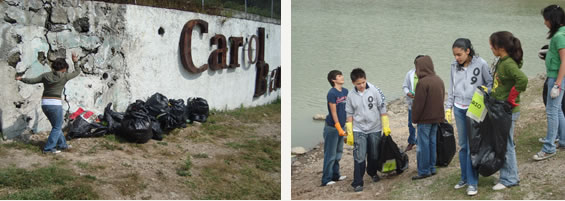
Cleaning is done by the 1st. Graders in Middle School. Trash is collected from the Madin Dam edges, distributing it in different bags according to its nature, so that the County may pick it up later. They recover from the water a cloth bag with a newspaper and pictures. The History teacher and the Art teacher are both working on the restoration of these pictures and the newspaper, that are quite deteriorated.
We made nature be in our roofs and walls that have traditionally been areas that are not used in urban zones and that would improve oxygen levels in cities as conflictive as Mexico City and its Metropolitan area and we have cultivating areas for self-consume. We propose to cultivate using hydroponics endemic species such as some orchids and cacti.
Besides, rainfall can be captured to avoid floods and remedy lack of water. In Concordia Site, we have the following projects programmed:
Cultivation and reproduction of orchids, cacti, oregano, chamomile, peppermint, mint, rosemary, wormwood, parsley, chives, gannet hydroponics, land lilies adapted to water.
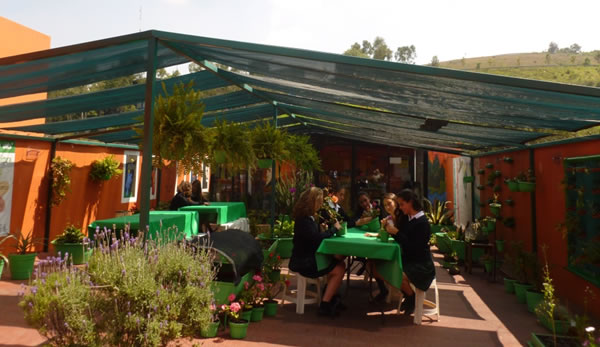
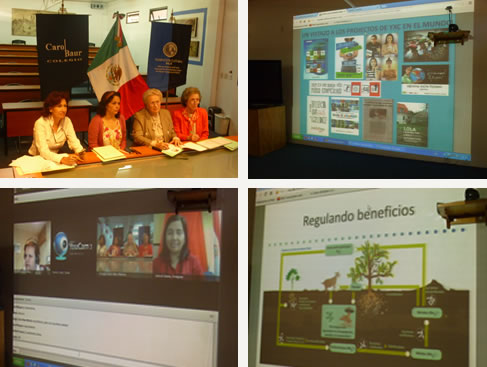
Colegio Carol Baur actively participates in the First Platform of on line collaboration of PEA net in an action dedicated to learn and facilitate exchanging ideas, experiences, activities and projects among teachers and pupils from all around the world about biodiversity and sustainable development.
Due to the excellent contribution of essays from our pupils registered on line, Dr. Sandra Maldonado Baur, Director General, was especially invited to the PEA net in Paris, France, to actively participate in this on line seminar presenting projects and activities done by Colegio Carol Baur students, last May 27 from the Videoconference Room at Concordia Site.
Indiscriminate and inappropriate use of our natural resources added to population growth, have generated negative consequences for our planet, majorly altering our ecosystems and this causes increase in ecological print and thus, impoverishing our environment, so we must develop adequate technologies that involve sustainable environmental sciences such as 3R to handle garbage, preservation and care of water, using any source of green energy and creating domestic self-sustainable easy to build biogardens for endemic reforestation and chemical-free natural orchards.
So, implementing technologies such as Phytoremediation will help us to preserve water and ecosystems that surround us, to diminish the negative impact of human actions that directly affect socio-economical items in all countries.
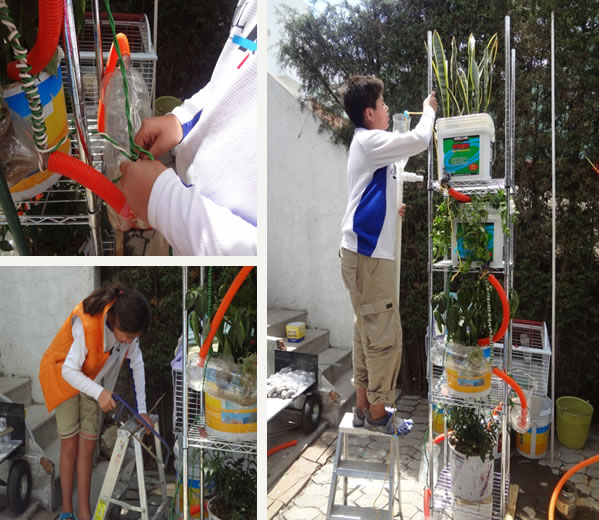
Reproduction in Captivity of the “Boa constrictor imperator”, of the Turtle with Red Legs (Rhinoclemmys pulcherrima), and of the Mexican Salamander (ajolote) (Ambistoma mexicanus)
Mexico is among the first countries in biodiversity variety, especially in amphibious and reptiles due to its privileged geographic situation. Working with bodies in captivity permits, among other things, to obtain valuable information about its development, conduct, reproduction and presently, its preservation, because unfortunately the herpetofauna in our country has faced overpopulation, habitat invasion, pollution, illegal commerce, etc. So, it is necessary that, among other strategies, developing of this species in captivity as it is done in the FES Iztacala, UNAM, Herpetarium and where the pupils of Carol Baur School contribute to study the reproduction in captivity of these endemic species.
Contributing to study reproduction in captivity of “Boa Constrictor”
As a way to help stop ecologic harm because of habitat invasion and avoid the danger of extinction of some reptile species like Boa Constrictor that is part of our rich biodiversity in Mexico, together with UNAM investigators, we are helping to reproduce in captivity this valuable species.

Unicel is a plastic material that has chemical characteristics that permit to use it to produce different articles like dishes, vases and packing material and consuming has gone out of control because it is used only once; this provokes pollution in soil due to the fact it is not biodegradable and of almost no interest for scavengers or recyclers. We developed this project to help the need of using new materials that are not harming for our environment, because garbage in Mexico goes to a sanitary landfill where it is in contact with soil. If we can manage to produce a material based on the properties of daily domestic products we discard and at low cost, we can have impact in this consuming society.
We created an ecological vase with biodegradable material of domestic discard (fibers like cactus and corn leaves and banana leaves) that can have thermal features, be water proof and resistant like Unicel .
WE OBTAINED THE 2ND PLACE IN THE SCIENCE FAIR IN VENICE, ITALY.
